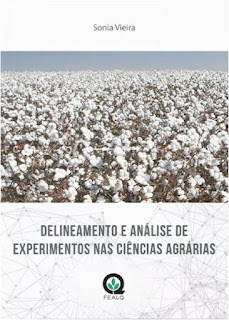🔴 When
the violation of homoscedasticity affects ANOVA
1.
Positive kurtosis (above 2): the F test loses power. That is, it tends not to
reject the null hypothesis, even when it is false.
2. Skewed distributions: in this
case, variance tends to increase with the mean, which can seriously bias ANOVA
results.
🟢 When
the violation does not seriously compromise the analysis
1. Equal sample
sizes across groups: if the groups have the same number of observations (r₁ = r₂ = ... = rₖ), small differences in
variances are usually acceptable — unless one is highly discrepant.
2. Large samples: with more than 10
observations per group, the F test tends to remain robust to mild
heteroscedasticity.
How to
test the homogeneity of variances?
The goal is to test
the null hypothesis:
H₀: s²₁ = s²₂ = s²₃ = ... = s²ₖ (i = 1, 2, ..., k)
against the alternative that at least one variance is different.
Among the available tests, we highlight:
· Levene’s test ✅
· Bartlett’s test ⚠️
· Cochran’s test and Hartley’s test (less common)
⚠️ Beware of Bartlett’s test:
It may mask differences in platykurtic distributions and indicate spurious
differences in leptokurtic ones.
Understanding
Levene’s Test
Levene’s
test evaluates whether the groups have similar dispersions. The logic is
simple: if the groups have homogeneous variances, the residuals (or their
transformations) should not differ significantly.
✔️ Traditional procedure (with squared residuals)
1. Calculate the residuals.
2. Square these residuals.
3. Perform a new one-way ANOVA using the squared residuals as the variable.
❗ If the F value is not significant, homoscedasticity is assumed.
✔️ Practical alternative (using absolute residuals)
❗ The procedure is the same: perform an ANOVA using the absolute values.
📌 Note: The F values may
differ slightly, but the conclusion is the same — here, there is no evidence of
heteroscedasticity.
✔️ Alternative versions:
It is also possible to compute residuals based on the trimmed mean or the
median, which may make the test more robust to outliers.
When
homoscedasticity fails: what to do?
If the hypothesis of equal variances is rejected, the
classic ANOVA may be inappropriate. But there are alternatives:
1. Data transformations
They can stabilize variances and make the data more normally distributed:
· Logarithmic (for positive, skewed data)
· Square root (ideal for counts)
· Arcsine square root (for proportions)
· Standardization (z-scores)
2. Nonparametric tests
· Kruskal-Wallis: replaces ANOVA when assumptions are not met.
3. Other solutions
· Remove outliers, if justified
· Increase sample size
· Redesign the experiment
💡 In
summary:
The homogeneity of variances is a key assumption of ANOVA,
but its violation is not always fatal. Understanding your data, choosing the
right test, and interpreting the results carefully are essential attitudes for
any good researcher.
References:
1. Dean, A. & Voss, D. (1999). *Design and Analysis of
Experiments*. Springer.
2. Scheffé, H. (1959). *The Analysis of Variance*. Wiley.
3. Zaiontz, C. Levene’s test. Retrieved from
http://www.real-statistics.com/one-way-analysis-of-variance-anova/homogeneity-variances/levenes-test/
4. And, why not?






No comments:
Post a Comment